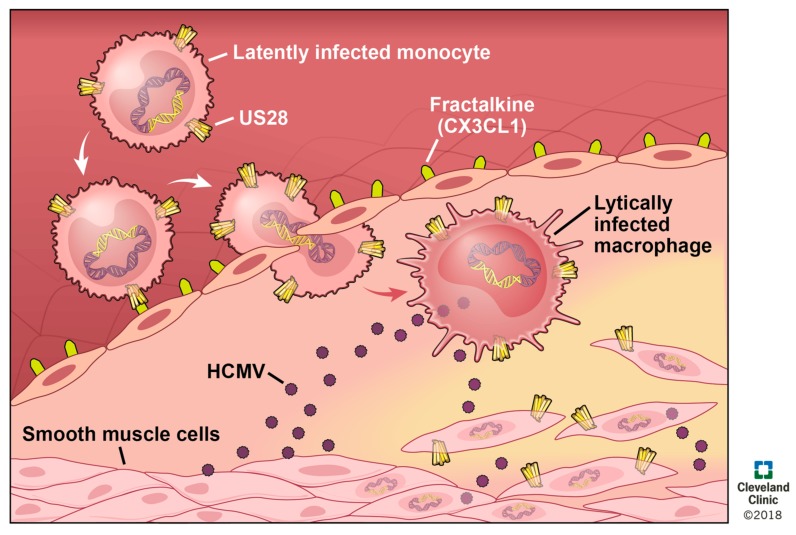Figure 4.
A model of pUS28’s role during atherosclerotic plaque formation. Monocytes are recruited to the injured endothelium, after which they extravasate through the endothelium into the intima, resulting in their differentiation to macrophages. SMCs then migrate towards the site of the developing plaque in response to pro-inflammatory signals. pUS28 expressed from latently infected monocytes can interact with fractalkine, upregulated on the endothelium, thus enhancing the binding of these cells. The differentiation of these cells to macrophages will result in lytic replication, capable infecting neighboring cells (e.g., macrophages, endothelial cells, and SMCs). Infection of SMCs leads to pUS28 expression, which is sufficient to induce the migration of this cell type [62]. Together, it is possible that HCMV, and specifically pUS28, could accelerate the cellular processes that lead to plaque formation.

